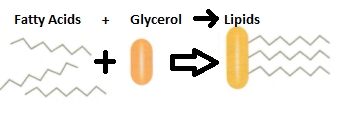Respiration and Metabolism
Metabolism
Metabolism is the sum of all types of chemical reaction that take place in the body.
The two types of metabolic reaction are:
- Anabolic (building reactions)
- Catabolic (breaking down reactions)
Anabolic reactions
In order to occur anabolic reactions require the input of energy. Examples of anabolic reactions include:
- The formation of amino acids in plants (nitrate ions and glucose) which are built up into proteins.
- Converting glucose into starch in plants, or glucose to glycogen in animals.
- The synthesis of lipid molecules.

Catabolic reactions
Catabolic reactions release energy. Examples of Catabolic reactions include:
- Respiration
- Breaking down amino acids to form urea, which is then excreted
Catabolic reactions produce waste energy in the form of heat (an exothermic reaction), which is transferred to the environment.
Respiration
The need to release energy is an essential life process, so respiration continuously takes place in all organisms. The exothermic reaction gives out energy.
Aerobic respiration
Aerobic respiration occurs when Oxygen and glucose molecules react and release energy. The energy is stored in a molecule called ATP.
The symbol equation for aerobic respiration is:
The body uses energy for many purposes including:
- Active transport
- Muscle contraction
- Transmitting nerve impulses
- Synthesising new molecules
- Maintaining a constant body temperature
Anaerobic respiration
Anaerobic respiration takes place in the absence of oxygen and is common in muscle cells. It quickly releases less energy than aerobic respiration though the incomplete breakdown of glucose.
Glucose → lactic acid + energy released
In plant and yeast cells, anaerobic respiration produces different products.
Glucose → ethanol + carbon dioxide + energy released
The symbol equation for anaerobic respiration in plant and yeast cells is:

The reaction above is used in brewing and wine making. It is also the basis for the manufacture of spirits.
Response to exercise
Anaerobic respiration will only take place when the muscles are working so hard that the lungs and circulatory system cannot deliver enough oxygen to break down all the available glucose through aerobic respiration.
Anaerobic respiration and recovery
Anaerobic respiration releases energy much faster over short periods of time. It is useful when short intense bursts of energy are required e.g. High intensity exercise (HIT) or the 100 metres sprint.
The incomplete oxidation of glucose causes lactic acid to build up. Lactic acid is toxic and can cause pain, cramp and fatigue.
The lactic acid must be broken down quickly and removed to avoid cell damage and prolonged muscle fatigue.
During exercise your heart rate, breathing rate and breath volume will increase so that sufficient oxygen and glucose is supplied to your muscles, your body can therefore remove lactic acid.
After exercise the process continues when deep breathing will occur until all lactic acid is removed. The repayment of oxygen is called oxygen debt.

